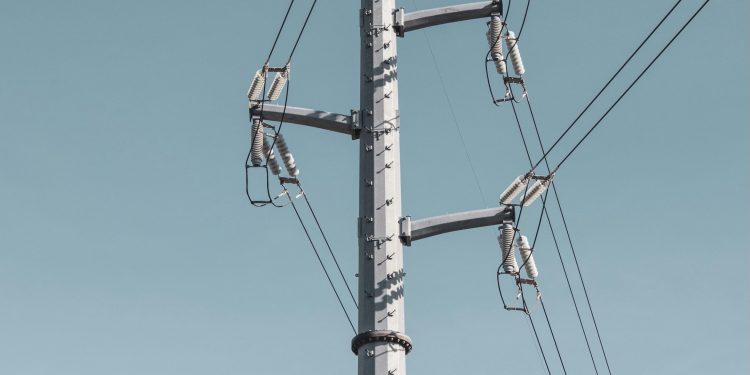In the dawning era of renewable energy, a quiet yet profound revolution is sweeping across rooftops worldwide. Solar panels, once the domain of futuristic thinkers, have become a common sight, symbolizing hope for a sustainable future. Yet, beneath this sunlit optimism lies a complex web of interests, with utility companies standing at a pivotal crossroads. As more homeowners harness the sun’s power, a pressing question emerges: Are utility companies, the traditional titans of energy distribution, truly embracing this residential solar expansion, or do they view it as a disruptive force to their long-established models? This article delves into the intricate dynamics between residential solar advocates and utility companies, exploring the motivations, challenges, and potential pathways toward a harmonious energy landscape.
Balancing the Grid Understanding Utility Companies Concerns with Solar Energy
Utility companies often find themselves in a complex dance of innovation and tradition when it comes to integrating residential solar energy into the existing power grid. Their primary concern lies in maintaining a balanced and reliable energy supply. Solar energy, by its nature, is intermittent and dependent on weather conditions, which can lead to fluctuations in energy production. This unpredictability challenges the grid’s stability, which has traditionally been managed through a centralized system. Utility companies must therefore navigate the intricacies of energy flow and grid infrastructure to accommodate the decentralized and variable nature of solar power.
Several factors contribute to their apprehension, including:
- Grid Reliability: Ensuring a stable and consistent power supply amidst fluctuating solar energy production.
- Infrastructure Costs: Upgrading grid infrastructure to handle two-way energy flow can be costly and complex.
- Revenue Models: The rise of solar energy challenges traditional revenue streams based on energy consumption.
- Policy and Regulation: Navigating regulatory frameworks that may not yet fully support widespread solar integration.
These challenges highlight the need for innovative solutions and collaborations between solar advocates and utility companies to achieve a sustainable energy future.

The Economic Equation How Residential Solar Impacts Utility Revenue Models
At the heart of the discussion lies a complex interplay between traditional utility revenue models and the burgeoning residential solar sector. Utility companies traditionally rely on a model where revenue is directly linked to the volume of electricity consumed by their customers. However, with the rise of residential solar, this model faces potential disruptions. Homeowners generating their own electricity reduce their dependency on grid-supplied power, thus diminishing the utility’s primary revenue stream. This situation presents a need for utilities to rethink their economic strategies and adapt to a rapidly evolving energy landscape.
Challenges for Utility Companies:
- Reduced demand for grid electricity
- Increased operational costs to manage distributed energy resources
- Pressure to innovate traditional pricing models
On the flip side, this shift can also offer utilities opportunities to diversify their offerings. By embracing and integrating residential solar, utilities can explore new revenue streams such as solar leasing programs, grid management services, and energy storage solutions. Key opportunities include:
- Developing solar partnerships
- Implementing smart grid technologies
- Offering incentives for solar adoption

Navigating Regulatory Hurdles Addressing Policy Barriers to Solar Expansion
Utility companies often find themselves in a complex web of regulatory frameworks that can unintentionally stifle the growth of residential solar energy. Regulations designed for traditional energy models sometimes don’t align with the dynamic and decentralized nature of solar power. This mismatch can result in a series of challenges that both utility companies and solar advocates need to address to foster a more inclusive energy landscape.
To navigate these regulatory hurdles, several strategies can be employed:
- Policy Reformation: Encourage legislative bodies to update energy policies to reflect modern technological advancements and sustainability goals.
- Collaboration: Foster partnerships between utility companies and solar providers to develop mutually beneficial solutions.
- Incentive Structures: Design incentives that align with both the growth of residential solar and the financial health of utility companies.
By addressing these policy barriers, stakeholders can pave the way for a more robust integration of solar power, ensuring that the benefits of renewable energy reach a wider audience while maintaining grid reliability.

Collaborative Solutions Fostering Partnerships Between Utilities and Solar Advocates
As the demand for renewable energy grows, collaborative solutions between utility companies and solar advocates are becoming increasingly important. These partnerships can bridge gaps, aligning the goals of both parties to create a sustainable energy future. By working together, utilities and solar proponents can address concerns such as grid stability, equitable cost-sharing, and regulatory challenges. Such cooperation not only benefits the environment but also enhances the reliability and affordability of energy for consumers.
Key areas of collaboration include:
- Grid Integration: Ensuring seamless integration of solar energy into existing grid infrastructures.
- Incentive Programs: Designing programs that reward both utilities and consumers for adopting solar solutions.
- Community Education: Promoting awareness about the benefits and challenges of residential solar energy.
- Regulatory Frameworks: Working together to influence policies that support fair and efficient solar expansion.
By fostering partnerships, utilities and solar advocates can transform potential opposition into a synergistic relationship that propels the energy sector towards a greener future.
The Way Forward
As the sun sets on our exploration of the intricate dance between utility companies and residential solar expansion, it’s clear that the landscape is as dynamic as the skies above. While utility companies grapple with the challenges of integrating decentralized energy sources, homeowners are increasingly drawn to the allure of solar independence. The interplay of innovation, policy, and economic interests continues to shape this evolving narrative.
In this complex tapestry, no single thread holds all the answers. Instead, the future of energy lies in a delicate balance, where collaboration and forward-thinking policies can illuminate a path toward a sustainable coexistence. Whether utility companies and solar advocates find common ground or continue to tread divergent paths, one thing remains certain: the pursuit of a brighter, cleaner future is a journey we must all embark upon together.
As we close the chapter on this topic, we are reminded that the story of energy is far from over. It is a narrative that invites all of us—utilities, consumers, and policymakers alike—to imagine, innovate, and illuminate the way forward.

































